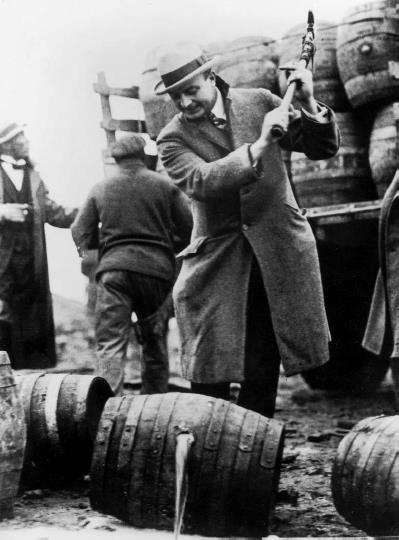The Taft Court (1921–30)Criminal Justice and Procedure |
In which case did the Taft Court create the automobile exception to the Fourth Amendment? |
The Taft Court ruled in Carroll v. United States (1925) that police officers did not need a search warrant to search the automobile of suspected bootlegger John Carroll for violation of the National Prohibition Act. Writing for the Court, Chief Justice Taft reasoned that a less stringent rule applies for searches of automobiles than homes because automobiles are mobile and evidence can be easily moved and destroyed. The Fourth Amendment generally requires that searches cannot be conducted without a warrant supported by probable cause. However, given the mobility of automobiles, the Court found that searches of vehicles need no warrant—they need only be supported by probable cause.
The majority then determined that there was probable cause to stop the automobile of John Carroll, noting that it was known that Carroll and his brother were suspected bootleggers. The evidence also showed that the area between the Michigan cities of Detroit and Grand Rapids was known to carry a lot of illegal liquor trafficking. Finally, a prohibition officer testified that Carroll and others had previously agreed to supply liquor to him although they did not follow through with the plan. “In light of these authorities, and what is shown by this record, it is clear the officers here had justification for the search and seizure,” the Court wrote.
Justices James McReynolds and George Sutherland dissented in an opinion authored by McReynolds. He wrote that the search of Carroll’s vehicle was founded on “mere suspicion—ill-founded as I think.” McReynolds questioned the finding of probable cause, asking: “Has it come about that merely because a man once agreed to deliver whisky, but did not, he may be arrested whenever thereafter he ventures to drive an automobile on the road to Detroit!”

